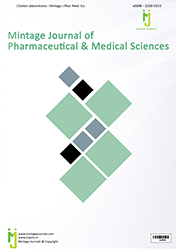Abstract
RELIGIOUS ORIENTATION AND ITS EFFECTIVE FACTORS AMONG MEDICAL SCIENCES STUDENTS
Author(s): MOHAMMAD REZA MOSTAFAIE, FARHAD INANLOO, ALI RAZAGHPOUR, HOSSEIN RAFIEI
Aim: Having information about how religious orientation is in medical sciences students, is necessary to improve it. Thereby, based on the limited studies in this regard, the present study was designed with the aim of studying the religious orientation and its effective factors among medical sciences students. Methods: This study is a descriptiveanalytic study conducted in Iran in 2015-2016. The sample of the study was students who were studying at Qazvin University of Medical Sciences. The sample required for the present study was estimated to be 566 by using the sample size formula. The sampling was Quota Sampling. The Persian version of Religious Orientation Scale was used to examine the religious orientation of the students. The scale consists of 45 items divided into two subscales. Results: Among 566 students participating in this study, 358 (61.2%) were girls and the rest were boys, and 508 (87%) were single. The mean age of the participants was 23.3 years. Regarding religion, nearly 98 percent of the samples were Shia. In total, 14.5%, 67.5% and 17.4% of the participants showed poor, moderate, good and excellent religious orientation, respectively. Conclusion: The present study showed that students of medical sciences have a good level of religious orientation. According to the importance of the religious attitudes to reduce mental disorders and promoting the academic achievement of students, it is recommended that students be examined at the time of entering universities regarding their spirituality and their attitudes toward spirituality.

ISSN: 2320-3315
ICV :81.58

